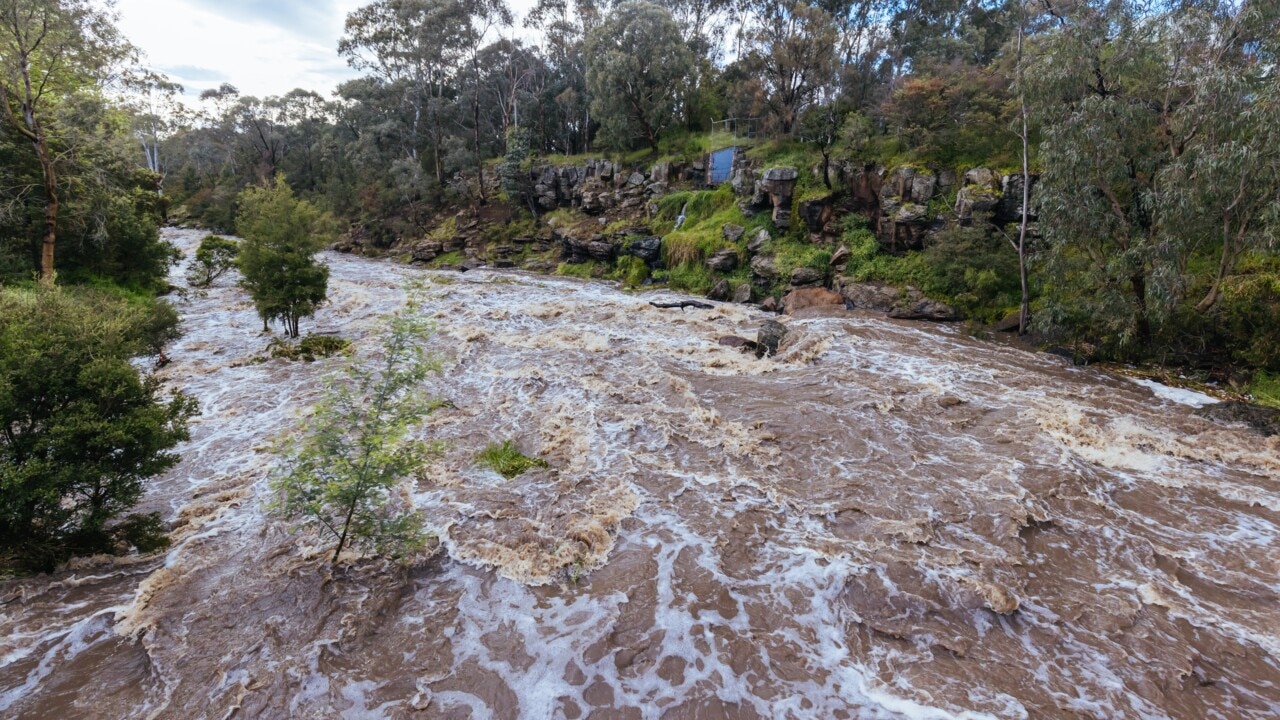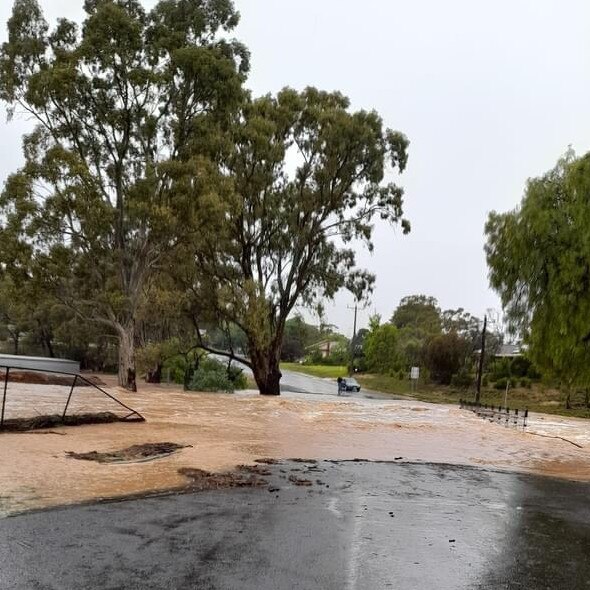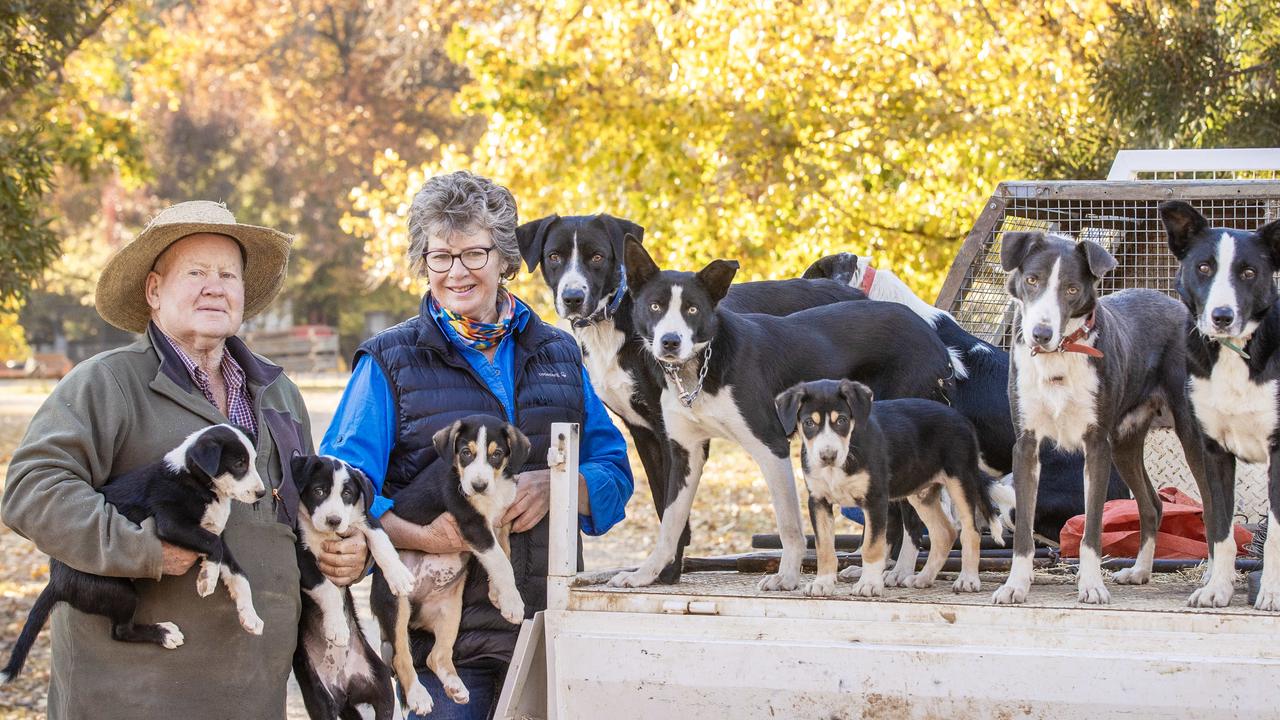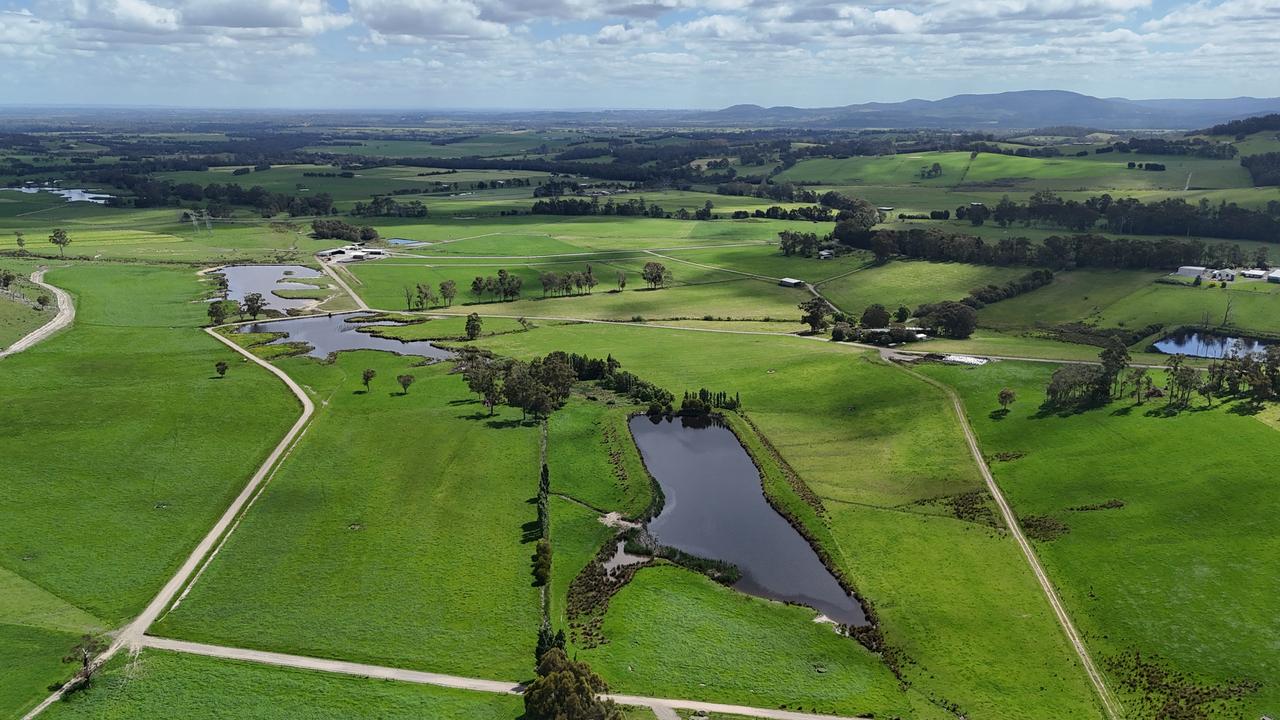Roads crisis: Premier Jacinta Allan electorate roads suffer in big summer rains
Almost 300mm of rain has fallen in some parts of central Victoria, further damaging some roads still not fixed from the 2022 floods.

Victoria’s regional roads crisis has worsened following record summer rainfall, prompting calls for more emergency cash for repairs.
More than 130 roads were closed at the peak of the January floods with fast-moving water tearing away whole sections of roads in some places – with parts of Premier Jacinta Allan’s own electorate near Bendigo suffering some of the most severe damage.
An “in-depth assessment” is underway.
Raywood farmer Tim Demeo lives in Ms Allan’s Bendigo East electorate and has recorded almost 300mm at his property since Christmas.
“It’s unprecedented amounts of rain, but like everywhere the roads were in a bad state beforehand,” he said.
“It is crumbling apart because of successive wet years.
“We’ve got gravel flying everywhere because water has flooded roads and the edges of roads have really washed away.
“It’s hard on vehicles, it’s hard on trucks and we are constantly wearing out tyres.”

Among the roads flooded in the Bendigo area at the height of the January rains were the Midland Highway, Bendigo-Tennyson Road, Axedale-Goornong Road and Bendigo-Murchison Road.
Victoria’s shadow minister for roads Danny O’Brien has called on the government for another emergency allocation of money for repairs.
He said the $165 million made available after the 2022 floods should be replicated.
“Victoria’s roads were deplorable before this summer’s wet weather and floods,” he said.
“Floods have made matters worse and there needs to be an immediate package of new funding just to catch up on the backlog of works needed to fix our roads.
“The government’s half-hearted attempt after the 2022 floods barely scratched the surface and state and local roads have been left wanting.
“The Premier should know how bad it has got from her own electorate.”

At nearby Axedale, which is also in the Bendigo East electorate and also had more than 200mm of rain this month, farmer Andrew Browne backed calls for more money to be spent on roads.
“The answer is more money, but I don’t know where that is going to come from,” he said.
“We’ve got spots now where the roads are now the table drains where the water runs down the middle of the road.
“It’s going to take a fair bit of work to fix them up.”
A Victorian government spokesman said “additional resources have been mobilised across the state” to assess the level of damage recent flooding and extreme rainfall have caused.
“Once these inspections are complete, we’ll have a better understanding of the total cost and timeline associated with longer term repairs,” he said.
“What were previously considered once-in-a-generation flood events are now commonplace, bringing record rainfall and inflicting unprecedented damage on our roads.
“Which is why we’re now delivering road maintenance as part of a $6.6 billion, 10-year strategy, allowing us to plan long-term and future-proofing regional roads.”

The northeast and Gippsland were other areas where large amounts of rain fell, with a section of the Great Alpine Road north of Ensay adjoining a section that had recently been upgraded now badly damaged. Hyland Highway south of Traralgon and the Mallacoota-Genoa Road were also badly affected.
Mr Demeo said the poor condition of roads remained the No. 1 issue for farmers.
He said parts of the road network, including an 11km stretch of the Raywood-Elmore Road at Kamarooka, were straining with additional use by large trucks.
“There hasn’t been enough investment through the chain,” he said.
“We can all get the crop off quicker and get it down to the port on bigger trucks.
“But roads are no good, bridges aren’t rated high enough to run these road trains and the port network hasn’t increased its capacity to get more ships in and out.”
Municipal Association of Victoria president David Clark said councils would continue to shoulder the burden of getting roads repaired.
“The reality is they are all probably only 20 or 30 per cent into doing repairs from the 2022 floods,” he said.
“It just takes so long to get the money.
“All councils have gone from a situation where they could risk it a bit, and go and do the work, and you’d get your money back.
“But now until the money is in the bank you won’t do the work, and that slows the process down by six to nine months.”




